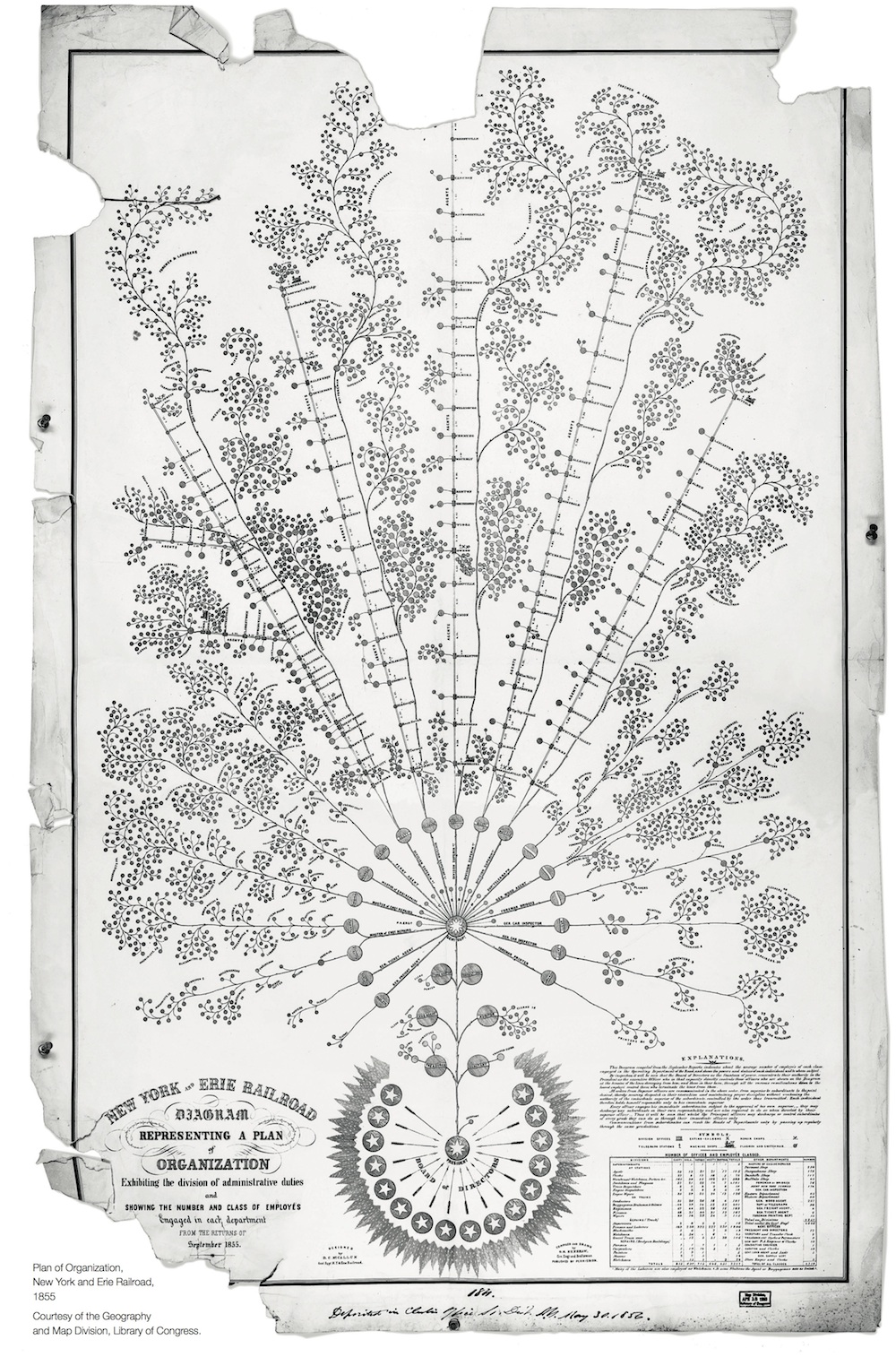 The first modern org chart was created in 1855 for the New York and Erie Railroad. Interestingly, it maps both authority, process, and geography together.
The first modern org chart was created in 1855 for the New York and Erie Railroad. Interestingly, it maps both authority, process, and geography together.
Structure, along with Methodology, is an essential aspect of teams, and has dramatic consequences on teams’ behavior. And while you can debate the structure of your organization endlessly, there are a finite number of ways to organize your teams:
- A discipline-based structure divides teams by job description, such as “Marketing” or “Engineering.”
- A process-based or horizontal structure divides teams by job description, but sorts them in the order that steps are completed.
- A divisional structure organizes the company by product line, geography, or customer.
- A matrix structure is set up so teams report to two authorities, typically a discipline-based team and a secondary team, such as a product.
- A circular structure positions the leadership at the center to reflect the idea that the organization’s vision and goals should spread outward. Yet, often these teams eventually just behave as either a discipline-based structure or divisional structure.
- A hybrid structure is some kind of blend of the above structures; they can be combined and adjusted based on the company’s needs.
While team structure is critical to the overall teaming model, it’s not a panacea for issues you might be experiencing on your own team. All too often, executives shuffle teams around to feel like they’re being proactive, but these changes result in little or no material return to the business. In fact, most reorganizations harm productivity, not help it. Be conscious about your team design, but don’t get carried away.
If you’re thinking about revising your team or organizational structure, ask yourself these questions:
- What’s the single most important attribute to win in our market for our consumer? In other words, what’s your strategy? Strategy should dictate structure, not the other way around. Is it cost efficiency, innovation, speed to market, product quality, experience quality, breadth of services or something else?
- What capabilities are most essential to realizing that strategy? Do those capabilities exist in other categories that you can learn from?
- How can you use the structure of your organization or team to elevate that capability internally and reduce barriers in its way? If you don’t immediately know, pose the question to the people in your organization who most embody that capability.
Lastly, when it comes to visualizing the team structure, ask yourself: what are you trying to accomplish with an org chart? Organizations can be both a hierarchy and a network, so you may need one way to model reporting structure and another way to show process.













